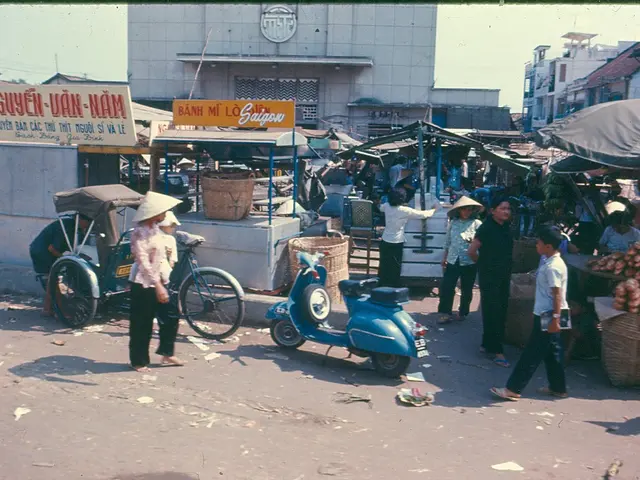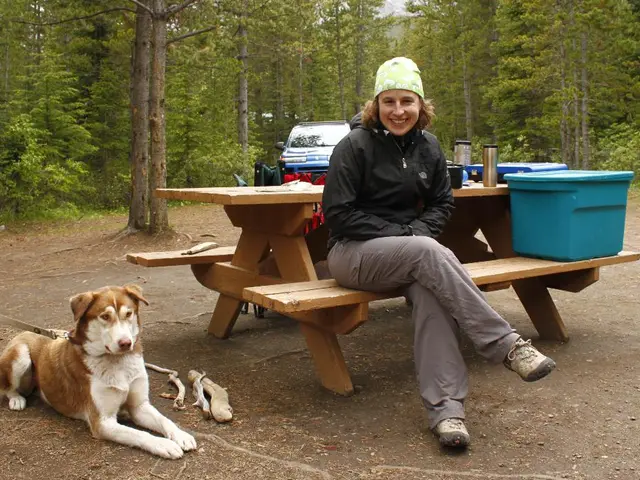Urban and suburban gardening is embracing pollinator corridors as a significant trend.
Creating Urban Pollinator Corridors: Empowering Communities to Save Essential Species
In an effort to combat the decline of pollinators and promote ecological health, urban and suburban residents are taking action by creating pollinator corridors. These green pathways connect fragmented habitats, providing a safe haven for bees, butterflies, and other insects to navigate through urban landscapes and access food and nesting sites.
Pollinator corridors serve as more than just travel routes. They enhance pollination for flowers, trees, and rooftop gardens, supporting healthy plant growth and green spaces within cities. By incorporating native plants that bloom at staggered times, these corridors offer continuous resources for pollinators throughout growing seasons. They also provide shelter and breeding habitats, including shrubs, dead stems, and logs.
The benefits of pollinator corridors extend beyond the immediate environment. Healthy pollinator populations help sustain urban ecosystems, increase resilience to climate change impacts, and can improve human well-being by fostering more vibrant, natural urban environments.
Residents can participate in pollinator corridor initiatives in several practical ways. Transforming lawns and yards by planting native flowers, shrubs, and hedgerows that provide nectar and pollen throughout spring to fall is one option. Creating and maintaining green spaces, even small ones like planters, window boxes, and living walls, can act as “stepping stones” within corridors.
Community initiatives like the Pollinator Pathway offer guidance on what to plant and when to support pollinators. The program teaches participants how to avoid invasive species and find region-appropriate options, and it allows participants to map their plantings online and team up with neighbors to expand pollinator-friendly zones.
Urban growth often erases natural spaces, replacing them with roads, buildings, and lawns, offering little support for pollinators. However, each patch of pollinator corridor, whether planted in a yard, along a sidewalk, or in a shared green space, contributes to the collective effort to counter the decline of essential species and rebuild ecological health.
Sadly, 34.7% of assessed native bee species are at risk of extinction, and more than 22% of native pollinators in North America face serious threats to survival. Leafcutter and digger bees are among the most vulnerable native bee species. Fortunately, many communities provide support through garden clubs and local organizations that organize shared efforts to establish pollinator corridors.
Starting a pollinator corridor doesn't necessitate a large yard or significant investment; even a balcony container with blooming native plants can provide essential habitat. By taking these steps, urban and suburban residents help create continuous, thriving habitats that sustain pollinators vital to ecology and food systems. Participation can be gradual and scaled to individual capacity, emphasizing progress over perfection.
Mandy, the author of Hungry Cooks Kitchen, writes about food, home, and everyday life, and she encourages readers to consider creating their own pollinator corridors to contribute to the health and vitality of their local ecosystems. By working together, we can strengthen food systems, restore habitat, and protect the balance that nature and people rely on every day.
- Mandy, from Hungry Cooks Kitchen, encourages homeowners to extend their focus beyond their kitchens and consider creating pollinator corridors to support the health of their local ecosystems.
- Incorporating native plants in gardens, containers, and green spaces can create stepping stones for pollinators, contributing to urban pollinator corridors.
- Sustainable living is not limited to food habits; building pollinator corridors in our homes and gardens can help save essential species and promote ecological health.
- Gardening enthusiasts can participate in community initiatives like the Pollinator Pathway to learn about planting native flowers and shrubs that provide resources for pollinators throughout the growing season.




